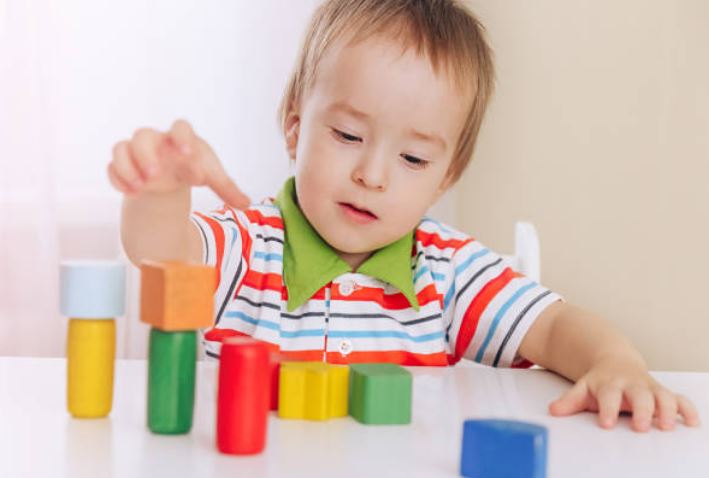Creating a Montessori-inspired play area at home can significantly enhance your child's learning and development. Montessori education focuses on fostering independence, creativity, and curiosity in children. By setting up a play area that adheres to Montessori principles, you can provide your child with a stimulating environment that encourages exploration and self-directed learning. Here are practical tips for creating a Montessori play area at home, including toy organization and selection.
For high-quality Montessori materials, visit Montessori Australia.

Understanding Montessori Principles
Before diving into the setup process, it's essential to understand the core principles of Montessori education:
- Child-Centered Learning: The environment should cater to the child's needs and interests.
- Independence: Encourage children to do things for themselves.
- Prepared Environment: The space should be organized and designed to support self-directed learning.
- Hands-On Learning: Provide materials that promote active, hands-on exploration.
- Simplicity and Order: A clutter-free, organized space enhances focus and concentration.

Selecting the Right Space
Choose a quiet, well-lit area in your home where your child can engage in uninterrupted play. Natural light is preferable as it creates a calm and inviting atmosphere. Ensure the space is safe and child-friendly, with any potential hazards removed.
Furniture and Layout
1. Low Shelves
Low, open shelves are a staple in Montessori play areas. They allow children to easily access toys and materials, promoting independence. Organize the shelves with a variety of toys, books, and activities, ensuring that each item has its designated place.
2. Child-Sized Furniture
Invest in child-sized tables, chairs, and other furniture. This empowers children to move and interact with their environment comfortably, fostering independence and self-confidence.
3. Rugs and Mats
Use rugs and mats to define different activity areas. For example, you can have a reading corner, a building area, and a space for arts and crafts. This helps create a sense of order and makes it easier for children to understand where each activity should take place.

Toy Selection and Organization
1. Natural Materials
Choose toys made from natural materials like wood, metal, and fabric. These materials provide a richer sensory experience compared to plastic. For a variety of high-quality wooden toys, visit Montessori Australia.
2. Educational Toys
Select toys that promote learning and development. Montessori toys often focus on specific skills such as fine motor development, spatial awareness, and problem-solving. Examples include:
- Building Blocks: Encourage creativity and fine motor skills.
- Puzzles: Develop problem-solving abilities and hand-eye coordination.
- Sorting and Stacking Toys: Enhance spatial awareness and cognitive skills.
3. Rotating Toys
To prevent overwhelming your child with too many choices, rotate toys regularly. Keep a few toys on the shelves and store the rest out of sight. Rotating toys also keeps the play area fresh and engaging.
4. Baskets and Trays
Use baskets and trays to organize smaller toys and activities. This makes it easy for children to see and select what they want to play with, promoting a sense of order and independence.

Creating Learning Stations
1. Reading Nook
Set up a cozy reading nook with a small bookshelf, comfortable seating, and a variety of age-appropriate books. Encourage daily reading by making the area inviting and accessible.
2. Art Station
Provide an art station with child-sized easels, drawing paper, washable paints, crayons, and other art supplies. Art activities promote creativity and fine motor skills.
3. Practical Life Area
Montessori education emphasizes practical life skills. Set up an area where children can engage in activities like pouring, scooping, and cleaning. Use child-sized tools and real-life objects to make the activities meaningful.
4. Sensory Play Area
Create a sensory play area with materials that stimulate the senses. This could include a sensory bin filled with rice or sand, playdough, or a water table. Sensory play enhances cognitive development and fine motor skills.

Maintaining the Montessori Play Area
1. Daily Tidy-Up
Teach your child to tidy up after themselves. This instills a sense of responsibility and helps maintain the order and simplicity of the play area. Provide easy-to-access storage solutions to make tidying up straightforward.
2. Observe and Adjust
Regularly observe how your child interacts with the play area. If certain toys or activities are not being used, consider replacing them with something else. The goal is to create an environment that meets your child's evolving interests and developmental needs.
3. Encourage Independence
Encourage your child to take an active role in maintaining the play area. Involve them in organizing toys, choosing new materials, and setting up different learning stations. This fosters a sense of ownership and pride in their space.
Setting up a Montessori play area at home is a rewarding way to support your child's development and foster a love of learning. By focusing on child-centered principles, selecting natural and educational materials, and maintaining an organized and engaging environment, you can create a space that encourages independence, creativity, and exploration.
For a wide range of Montessori toys and materials, visit Montessori Australia. Our carefully curated collection ensures that you find the perfect items to support your child's growth and development in a Montessori-inspired environment.

